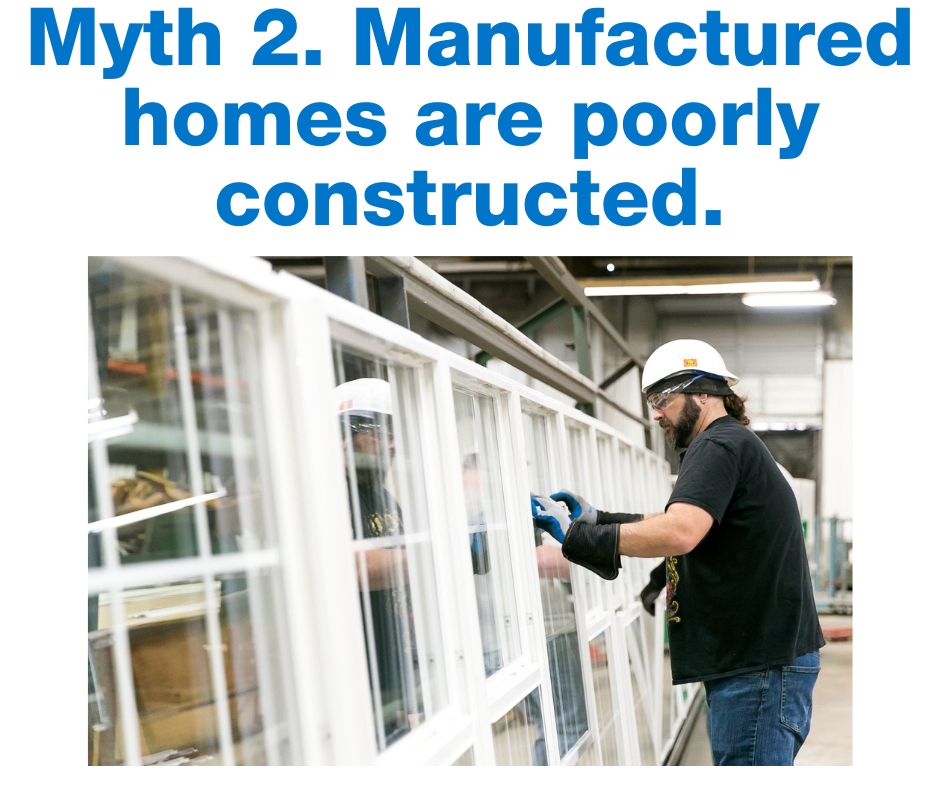Busted: 3 Manufactured Home Myths Debunked

At Clayton, we know there are still some old myths out there about manufactured homes. That’s why we’re here to break down three common misconceptions, from what these homes look like to the safety standards and materials used to build them.
I’ll keep it simple: Manufactured homes have definitely changed a lot over the years. That ugly box you might be picturing doesn’t reflect all of the innovations in manufactured housing over the past few decades. In fact, modern manufactured homes are constructed to national codes inside facilities that use a variety of quality home building materials, so they offer today’s home buyers an affordable, stylish and reliable home.
So, let’s get right into it and debunk myths about manufactured homes.

In my opinion, one of the best things about manufactured homes is how versatile they are. Clayton builds homes in a wide range of prices, sizes and styles, because we want to make sure you find a new home that works for you.
For example, we have floor plans that range from 1 to 5 bedrooms and from under 1,000 sq. ft. to over 2,000. We also offer options like turning an extra bedroom into a den or flex space, creating a primary bedroom retreat or even having two living spaces to make sure your home is ready to grow with your needs over time.
In the interiors of our homes, you’ll find the features you’ve really been looking for, like kitchen islands, standalone bathtubs and built-in storage. And we know being able to personalize your new home is important, which is where our different potential customization and upgrade options come in to help you really make your space your own.
We didn’t forget about that old fashioned, boring exterior you have imagined earlier, either. Today, many manufactured homes include beautiful and versatile features like large wraparound porches and attached garages.
And all of this variety extends to the overall style of manufactured homes. Clayton has models that range from farmhouse chic to minimalist modern to traditional details to give you the perfect starting point for your decor. Inside and out, we’ve come a long way from the cramped, cookie-cutter mobile homes of the past!

Speaking of old mobile homes, let’s set a few things straight when it comes to this next myth. Some people may use the terms “mobile home,” “manufactured home” or even “trailer” interchangeably, when they’re really taking about two different things.
Before the 1970s, there weren’t uniform rules or regulations about how mobile homes had to be built, which often led to poor construction quality and questions about safety. Then, in 1976, the HUD Manufactured Home Construction and Safety Standards created national standards for manufactured homes for systems like fire safety, energy efficiency, plumbing and more. This HUD code is what sets manufactured homes apart from mobile homes and ensures a new manufactured home is built to the appropriate wind, thermal and roof load zones. That means today’s manufactured homes are stronger and more durable than those old homes of days past.
And at Clayton, we know that strength and durability is also on the mind of buyers who are looking for a home for their families. That’s why we partner with top brands you know and trust throughout our homes, and we’re always looking for new ways to ensure quality and innovation in everything we do. We also include many features, like a smart thermostat, low-E windows, LED lighting and more, that are designed to make your home more efficient and help you save money on your annual energy bills.

This last myth is one we get a lot of questions about, and it’s easy to understand why because it can often be a complicated topic. Investing in a home and building equity is a big step for your financial future, and Clayton wants you to feel confident about the home buying journey. The truth is that there are many ways to potentially add to the value of your manufactured home over time.
One of the factors that can help make manufactured homes a good investment is that they’re typically more attainably priced than traditional site-built homes. This means you can become a homeowner while still remaining within your budget, which will then help give you the freedom to work toward other financial goals you may have.
There are a few other details to consider when you purchase your home, too. The first one is land. Placing your new manufactured home on land that you own can help your home appreciate in value over time, especially if that land is in a desirable location people may want to move to in the future. You’ll also want to think about placing your home on a permanent foundation, which is similar to a traditional site-built home.
Finally, curb appeal is a big deal for any house. A home that’s in good repair is more appealing to prospective buyers if you ever do decide to move, and routine maintenance will help you keep an eye out for any minor problems you can fix before they become expensive headaches. You’ll also want to keep up with landscaping, cleaning your exterior siding and skirting, and taking care of your home’s HVAC system and appliances.
Did we answer some of your biggest questions about manufactured homes, and maybe change your mind about a few things? If you’re ready to keep learning, you can head over to the Home Building section of our Studio blog to explore materials we use, our sustainability practices and more!
Are you ready to find your dream home?
Start shopping now or find a home center in your area to learn more about Clayton Built® home options.By entering your email address, you agree to receive marketing emails from Clayton. Unsubscribe anytime.
© 1998-2025 Clayton.




